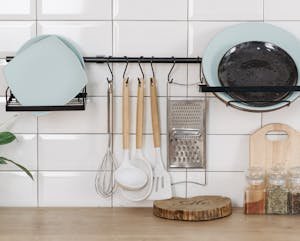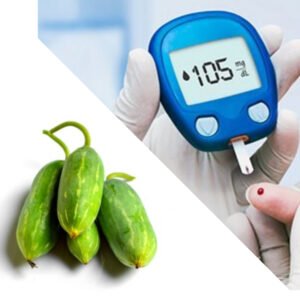This guide will Explore the different types of cooking utensils, their advantages & disadvantages, and how to choose the best one for your specific cooking needs. Choosing the right cooking utensils can transform your experience in the kitchen. Whether you’re a home cook or a professional chef, the right tools significantly affect cooking efficiency, food safety, and flavor. But with so many options—wooden spoons, stainless steel spatulas, silicone tongs—how do you determine the best?
Importance of choosing the Right Utensils
The utensils you use impact everything from cooking efficiency to health and even the longevity of your cookware. Some of materials react with certain foods, affecting flavor and nutrition. Others distribute heat more evenly, ensuring perfectly cooked meals.
When choosing a cooking utensil, you must consider:
Heat resistance – Can it withstand high temperatures?
Durability – Will it last long without breaking or wearing out?
Food safety – Is it non-toxic and safe for cooking?
Ease of cleaning – Can it be cleaned easily without absorbing stains and odors?
Compatibility with cookware – Does it work well with your pots and pans without scratching or damagin them?
Different Cooking utensils
1. Stainless Steel Utensils:
Stainless Steel is a durable and long-lasting metal, resistant to heat, rust material, and corrosion. this does not absorb odors or bacteria. It works well with most cookware except nonstick surfaces. This is easily scratched cookware and is not ideal for nonstick or ceramic pans. Handless can become hot when left in a pan. The best use for Flipping meats, stirring soups, and handling high-heat cooking.
2. Woodern Utensils
Woodern utensils is a gentle on cookware and Ideal for nonstick and cast iron pans, as they won’t scratch surfaces. Basically heat-resistant – Unlike metal, wooden utensils do not conduct heat, preventing burns. aesthetic apeal type Adds a rustic charm to your kitchen.
Absorbs Moisture Can retain flavors and bacteria if not properly cleaned. Not Dishwasher Safe and Requires hand-washing and occasional oiling to prevent drying out. Best Use for Stirring sauces, mixing dough, and handling delicate foods.
3. Silicone utensils
Silicone utensils also Safe for All Cookware and Won’t scratch nonstick or enameled cookware.Heat-Resistant Can withstand high temperatures, making it ideal for baking. Flexible and Non-Stick Perfect for scraping bowls and pans. Can Retain Odors – Some cheaper silicone utensils may absorb strong food smells. Not as Sturdy – Might not be the best for heavy-duty tasks like flipping large steaks. Best Use for Baking, sauteing, and working with nonstick cookware.
4. Baboo Utensils
Bamboo utensils is a eco-friendly biodegradable and sustainable utensils. This is lightweight and durable and stronger than regular wood and resistant to stains. Doesn’t conduct heat comfortable to hold during cooking. Not dishwasher safe Needs to be hand-washed and maintained. Absorbs Water Can crack if left in water for too long. Best Use for stirring, flipping, and serving food.
5. Nylon Utensils
Nylon utensils ia a budget-friendly and affordable and widely available. Nonstick safe and won’t damage delicate surfaces. Lightweight and easy to clean – usually dishwasher safe. Lower heat resistance it Can melt when exposed to high temperatures. Less durable wears out faster compared to silicone or stainless steel.

6. Cast Iron utensils
Cast iron Extremely durable and long-lasting material. Ideal for high-heat cooking. It can be enhance the flavor of food over time. Heavy and can be difficult to maneuver. Requires seasoning and maintenance. Best use for cooking on cast iron griddles or open flams.
Choosing the Right Utensil for Your Cooking Style
For Everyday Cooking
If you’re cooking daily meals, a combination of silicone and stainless steel utensils is ideal. Silicone tools are perfect for nonstick cookware, while stainless steel is best for high-heat tasks like searing and deglazing.
For Baking
A silicone spatula is essential for mixing batter, scraping bowls, and folding ingredients. A wooden spoon is also useful for stirring dough and preventing overmixing.
For Grilling and BBQ
Opt for stainless steel tongs and spatulas. These are sturdy, heat-resistant, and provide a firm grip for flipping meats and vegetables.
For Nonstick Cookware
Silicone, nylon, or wooden utensils are your best bet. These materials won’t scratch or damage the surface of nonstick pans.
For Sustainable Cooking
Bamboo utensils are a great choice if you’re looking for an eco-friendly option. They’re biodegradable, lightweight, and safe for all cookware.
Maintenance and Care Tips
Wooden and Bamboo Utensils: Hand-wash with mild soap and dry immediately. Apply food-grade mineral oil to prevent drying.
Stainless Steel Utensils: Dishwasher safe, but hand-washing helps maintain their shine. Avoid leaving them in acidic foods for too long.
Silicone and Nylon Utensils: Dishwasher safe but should be inspected for signs of wear, especially if exposed to high heat frequently.
Choosing the Best Cooking Utensil for Your Needs
1. Consider Your Cookware:
Non-stick pans: Use wooden, silicone, or nylon utensils to avoid scratching the coating.
Stainless steel or cast iron: Stainless steel, cast iron, and wooden utensils work well.
2. Think About Heat Resistance
If you cook at high temperatures (like frying), opt for stainless steel or silicone. Nylon and plastic utensils may melt under extreme heat.
3. Prioritize Durability
Wooden and stainless steel utensils tend to last the longest. Silicone and nylon utensils need to be replaced more frequently.
4. Hygiene and Maintenance
Stainless steel and silicone are the easiest to clean. Wooden utensils require extra care to prevent bacterial growth.
Which Utensil is the Best?
There is no single “best” cooking utensil—it depends on your cooking habits and the type of cookware you use. However, if you want a well-rounded kitchen, investing in a mix of wooden, stainless steel, and silicone utensils will cover all your needs.
For versatility and durability, stainless steel is the best overall choice. If you use nonstick cookware, silicone is the safest and most flexible option. Forbsustainability and aesthetics, bamboo or wooden utensils are excellent additions.
Choose the right tools for your kitchen, and cooking will become more enjoyable, efficient, and safe!




